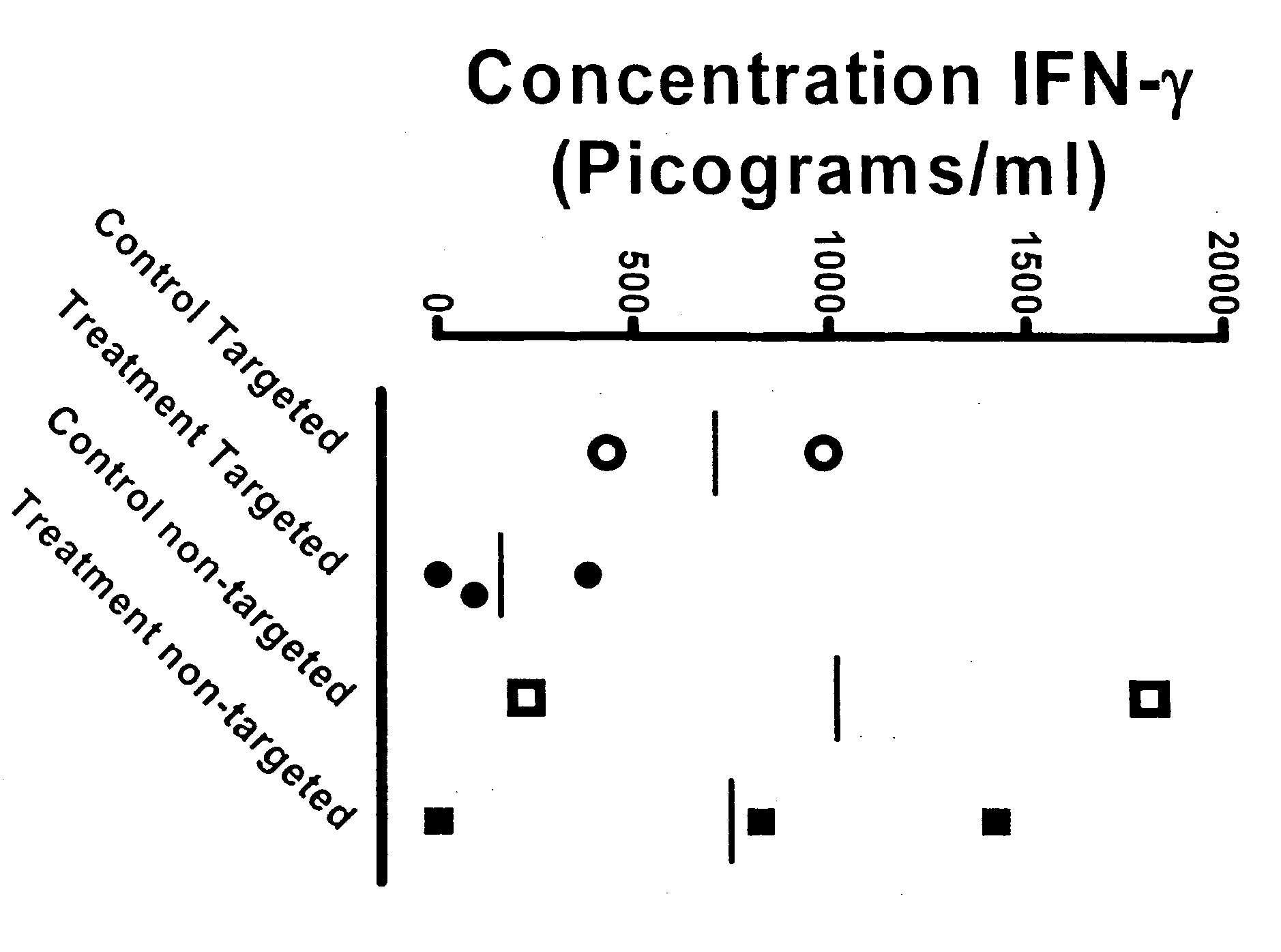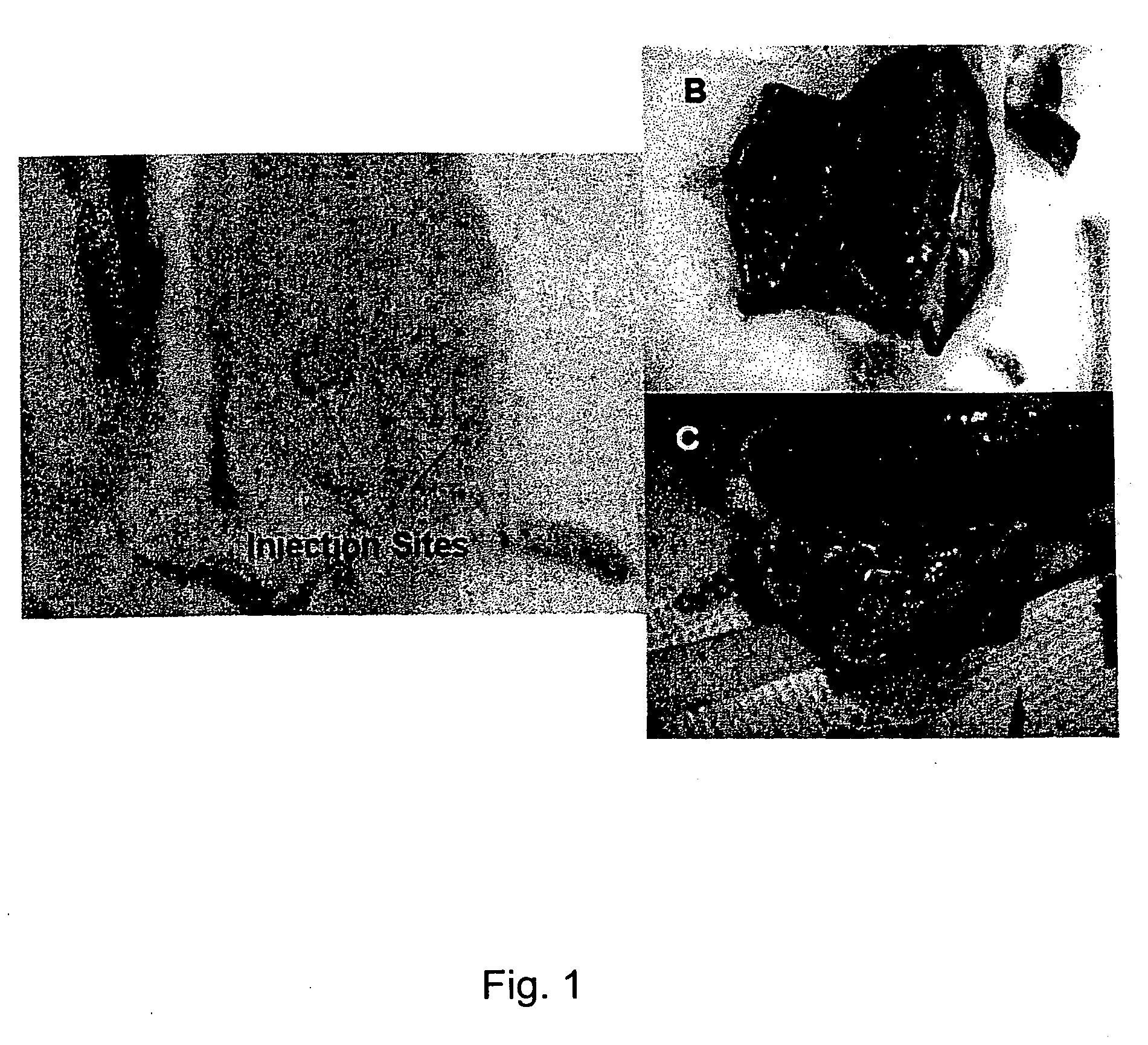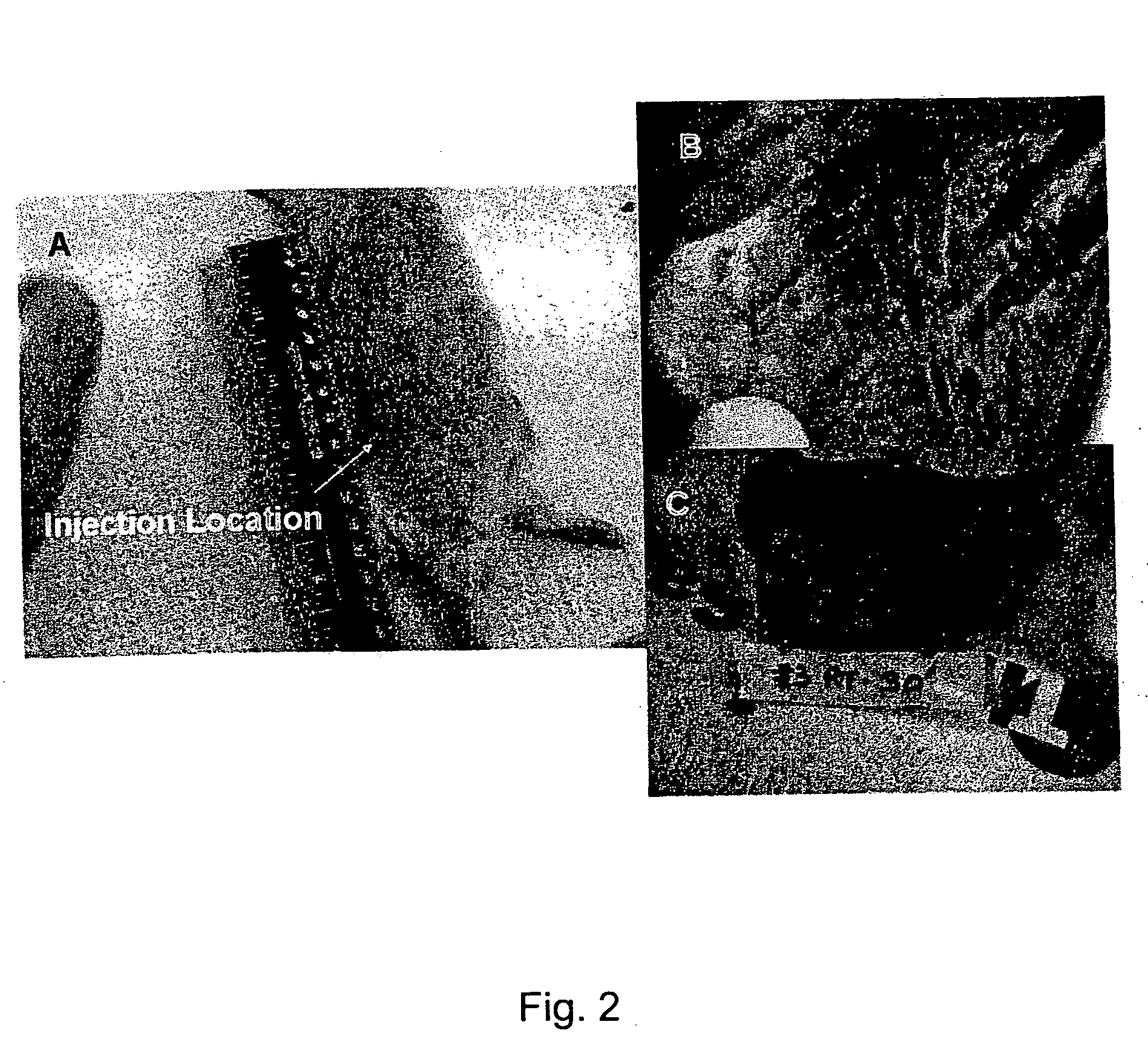Localized delivery to the lymphatic system
a lymphatic system and lymphatic system technology, applied in the direction of angiogenin, anti-anti-cancer medical ingredients, prosthesis, etc., can solve the problems of inability to administer systemically for extended periods of time, severe limitation of the recipient's ability to combat cancer, and many immunosuppressive agents toxic to the liver and kidneys
- Summary
- Abstract
- Description
- Claims
- Application Information
AI Technical Summary
Benefits of technology
Problems solved by technology
Method used
Image
Examples
example 1
Acute and Chronic Delivery of Dyes
[0077] The effect of local continuous delivery of dyes in a rat model system was used to map lymphatic drainage and to determine the feasibility of local delivery to lymphatic drainage beds. Animals were implanted with Alzet® pumps delivering tracking compounds for fourteen days. Dye diffusion was documented by photographing the viscera of animals at the termination of the study. The results demonstrate local delivery of tracking compounds without systemic distribution. Continuous local delivery of India ink was limited in distribution to the ipsilateral lymph node. India ink was not detected in the contralateral and distal lymphoid organs. Thus, the continuous targeted delivery of compounds to a target organ can be accomplished with minimal systemic side effects.
[0078] In this example the primary and secondary draining lymph nodes for two putative implant sites in rats were identified. The primary and secondary draining lymph nodes following acut...
example 2
Localized Delivery of Immunosuppression: Antibody
[0094] In this example, the effect of local continuous delivery of an immunosuppressant was evaluated in a rat model system. Animals were implanted with Alzet® pumps delivering a lymphocyte depleting antibody, and monitored for systemic changes in lymphocyte numbers. Following twenty days of compound delivery, the animals were immunized with a foreign protein, and allowed time to respond to the protein. Lymphoid tissues were collected at the end of the study and analyzed for cell numbers, cell proliferation in response to immunized protein, and for their ability to secrete cytokines.
Materials and Methods
[0095] Animals and Dosing. Male Lewis inbred rats six to eight weeks of age were obtained from Charles River Laboratories and acclimated for five days before study initiation.
[0096] Commercially prepared complete Freund's adjuvant (CFA) was mixed with ovalbumin (200 milligram / milliliter (mg / ml) in phopshate buffered saline (PBS)) ...
example 3
Localized Delivery of Immunosuppression: Small Molecules
[0109] In this example, the effect of local continuous delivery of immunosuppressive agents on immune responses was evaluated in a rat model system. Use of the immunosuppressive agents tested here served as a model for localized delivery of small molecules. Animals were implanted with Alzet® pumps delivering a “cocktail” of immunosuppressive agents, and immunized with a foreign protein. After induction of an immune response, cell proliferation was assayed in vitro by measuring thymidine [3H] incorporation. The lowest immunosuppressant dose having therapeutic efficacy was identified, and the distribution pattern of the effect on immune response following local delivery was established.
Materials and Methods
[0110] Animals. Male Lewis inbred rats six to eight weeks of age were obtained from Charles River Laboratories and acclimated for five days before study initiation. The study included a total of forty-two (42) animals, with...
PUM
| Property | Measurement | Unit |
|---|---|---|
| Therapeutic | aaaaa | aaaaa |
| Distribution | aaaaa | aaaaa |
Abstract
Description
Claims
Application Information
 Login to View More
Login to View More - R&D
- Intellectual Property
- Life Sciences
- Materials
- Tech Scout
- Unparalleled Data Quality
- Higher Quality Content
- 60% Fewer Hallucinations
Browse by: Latest US Patents, China's latest patents, Technical Efficacy Thesaurus, Application Domain, Technology Topic, Popular Technical Reports.
© 2025 PatSnap. All rights reserved.Legal|Privacy policy|Modern Slavery Act Transparency Statement|Sitemap|About US| Contact US: help@patsnap.com



